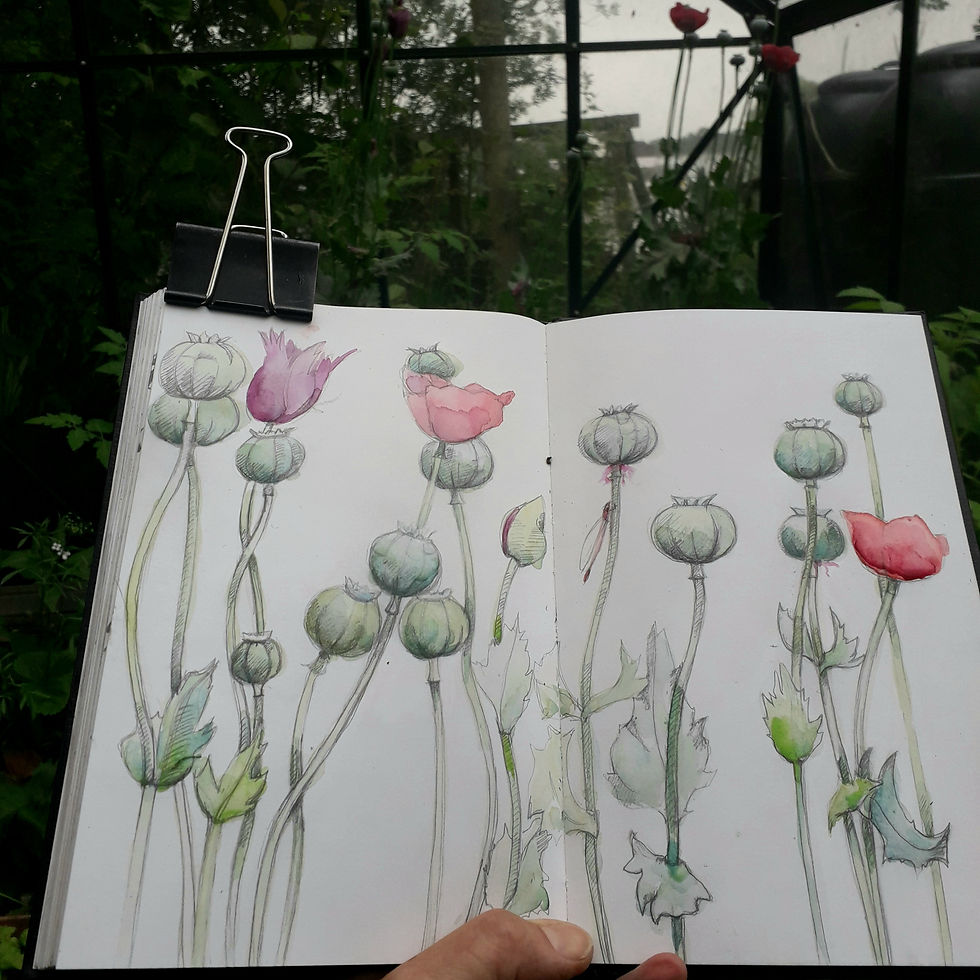Closer to home
- Painter and Printmaker
- May 13, 2021
- 3 min read
Updated: Feb 14, 2022

I didn’t intend for there to be a pause here, but then I didn’t expect what would happen in the months that followed.

In the first lockdown, I savoured that glorious spring, relishing the time it gave me in the garden and seeing nature thrive and blossom in those strange, quiet weeks, was a joy. But the winter was very different. The novelty of the new situation we faced had worn away, as life became more uncertain, and staying home felt strained rather than liberating. I struggled to gain traction in my work, it seemed a trivial thing to do in the current climate, and I felt confined by the dark days. I longed to be somewhere different.

And to help satisfy this longing to escape, I walked. I often walked the same route, circling the out laying villages, just outside my home town of Diss. The landscape of wide, open fields shifted from being bleak and featureless and slowly began to be familiar and comforting. I stomped along the muddy paths that ran alongside the fields and through copses and down green lanes, hoping for glimpses of hares as I turned the corner into a new field, or roe deer who were enjoying the uneasy peace of lockdown, but who stayed at a watchful distance. On the stretch home, I began to look forward to the chattering of the rooks as they gathered above Fersfield church as they would have done for generations.
I have always loved the muted tones of winter, but standing out and drawing in the biting wind, as it swept across with nothing to stop it, was not possible, so I walked with my camera over my shoulder ready to snatch fleeing hares or soaring buzzards harried by crows, and all the time unconsciously absorbing it all.
And then the snowdrops and aconites came, providing chinks of light in the gloom of winter. Across the road from Fersfield church they lit up the earth beneath the rookery.

Primroses began to fill the ditches, with occasional rogue red ones and the air softened. I began to take a tiny sketchbook with me and started to make notes of the changes. With a camera, you can catch fleeting moments, but with a sketchbook you have to stand and really look and take note.
Punctuating the open spaces, oak trees are the notable feature against the big skies, ancient survivors of the changes in the farming landscape. And I began to realise that while this patch may not have spectacular views, or rugged hills, it’s quiet, unassuming nature was worth noting all the same and had, through the course of my daily walks, become the place that I wanted to be.
South Norfolk is often overlooked. It is rarely mentioned in the guidebooks which lead the traveller on to the North Norfolk coast or to the Broads. I had been waiting for lockdown to end so that I could go elsewhere. I too had been looking beyond, while what I had on the doorstep was just as worthy of note. This quote from “They Can’t Cancel Spring”, by David Hockney, brought me up short: “It is not the place that is intrinsically interesting; it is the person looking at it”. Well, that told me! He was talking of Van Gogh who had recorded the flat, Netherlands landscape and yet had made it sing.
Over the past weeks I began, on milder days, to take out my sketchbook and draw the trees and fields that had been such a comfort over the last few months. I bought a foldable stool and perched myself behind hedges ( I hate being looked at when drawing!) and found a new love. Sitting in the countryside, listening to a sky lark above, or having a hare draw close to see what you are doing, has brought back the love I had for making images.
I have been showing them over on Instagram and Twitter and have made the hashtag #seekingtheoverlooked for others to share theirs too.
Over the coming week I shall continue to draw and sketch the landscape and do hope you will join me in my new adventure.




How very nice to see a blog post from you again. I think it is right about not being the place but the person who is intrinsically interesting. The close attention you pay to these trees and the landscape around them makes them come alive for all of us.
Thank you for such a moving post, it really spoke to me. Your drawings are beautiful. I have one of your cushions which brings me joy every day. Have you thought about producing a book containing your lockdown drawings? I feel sure it would prove popular.
Oh Deborah, this is wonderful. You really should do a book. Your writing reads as beautifully as your sketches and prints are on the eye. And your photographs are always stunning. This idea of simply sitting and observing to see what comes really resonates, as does that feeling of being where one is meant to be. I look forward to enjoying your observations throughout the coming seasons. xxxxx
Your words are so soothing. You remind me of a visual Mary Oliver!
Just wonderful, your drawings capture the essence of the place beautifully.